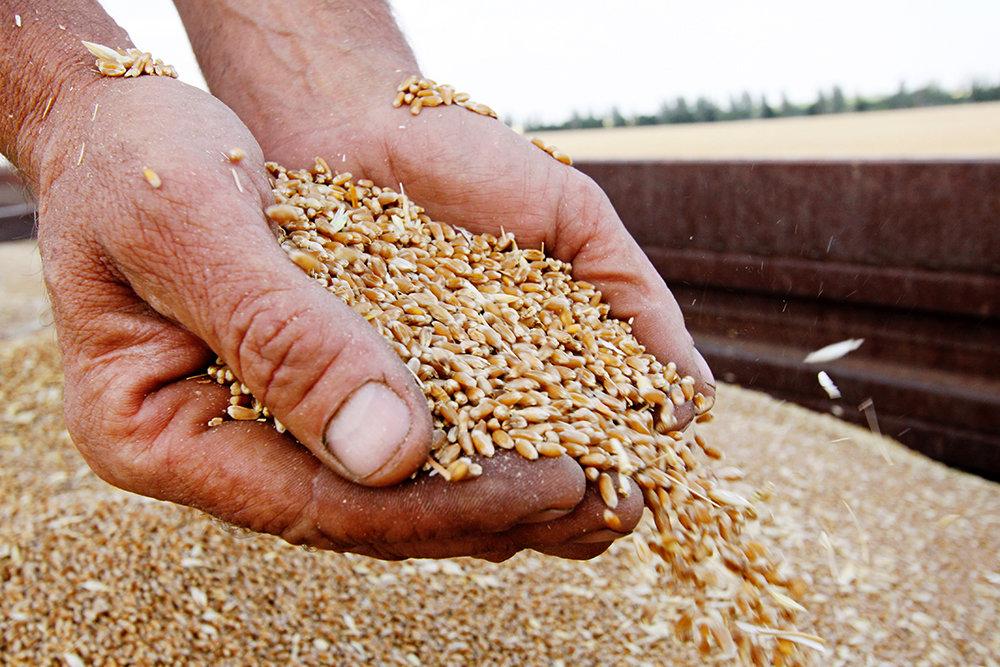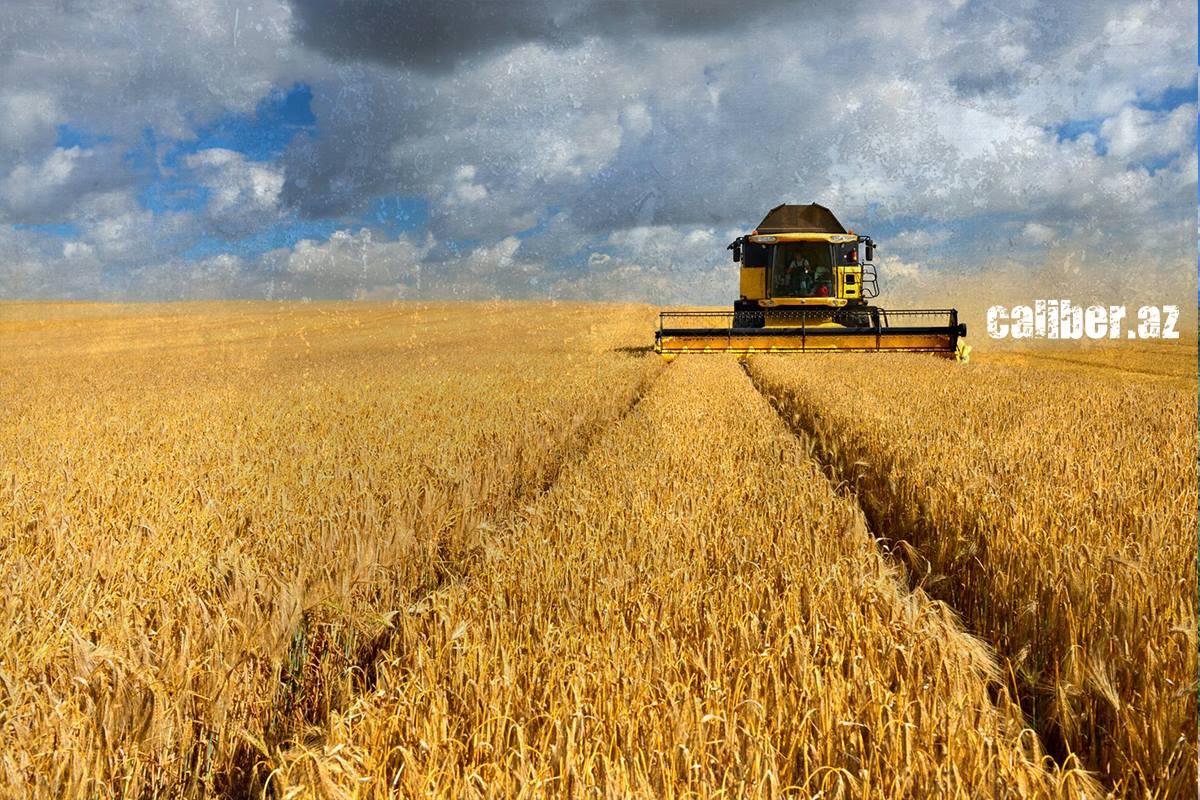Global grain market faces declining supply and price volatility in 2025 Challenges for the region
As of early 2025, the global grain market appears to be heading towards a decline in supply, which may lead to an intensification of price volatility. According to the December report from the Food and Agriculture Organization (FAO), there was a slight decrease in the global grain harvest in 2024. However, for the post-Soviet space, the prospect of reduced exports from Russia is of much greater significance.
In 2024, due to export quotas and other restrictions, around 10 million tons of the Russian harvest were rendered unusable, and according to forecasts from the Russian Grain Union (RGU) for 2025, the volume of Russian grain exports will decrease by a third. In Azerbaijan, which imported 1.292 million tons of wheat last year, necessary reserves have been created, and at the same time, efforts continue to maximize domestic grain substitution.
The FAO report published in December last year indicated a 0.6% decrease in global grain production compared to 2023, with the global harvest estimated at 2.841 billion tons. This decline was primarily driven by corn, which accounts for around 80% of global feed production: due to reduced corn production in the United States and the European Union, the harvest reached 1.217 billion tons, 1.9% lower than in 2023. The global wheat production forecast for 2024 was also revised downward to 789 million tons, slightly lower than the levels of the previous year. The reduction in wheat projections is mainly attributed to extreme weather conditions in some European Union countries, where excessive rainfall led to crop losses.
As for 2025, according to FAO data, several negative factors are affecting the winter wheat planting campaign in the Northern Hemisphere. These include the decline in global prices in 2024, which does not encourage the expansion of grain cultivation areas. In Western Europe, excessive rainfall in early autumn last year delayed the planting of winter crops. Conversely, a lack of rainfall in some regions of Eastern Europe led to delayed germination of crops. In the key wheat-producing southern regions of Russia, rainfall was below average, leading to reduced soil moisture, which also hindered planting. Finally, adverse weather conditions significantly complicated the planting campaign in Ukraine, where the ongoing war continues to severely hinder the work of grain-producing farms.
Against this negative backdrop, forecasts for the U.S. harvest are assessed as ranging from good to excellent. Wheat planting in mainland China and India for the 2025 season is generally favourable. FAO's December forecast for global rice production in the 2024–2025 season is based on the expansion of planted areas, which could result in a 0.8% increase in annual production, reaching a record level of 538.8 million tons.

For the countries of the post-Soviet space, forecasts for grain production in Russia, Kazakhstan, and to some extent Ukraine, are particularly relevant, as the situation in these markets directly affects the prospects for wheat imports and prices. Specifically, the Russian grain market, which is crucial for the entire Eurasian region, has been facing significant problems for the second year in a row. Last year, due to the export quotas and additional customs duties imposed by the Russian government, grain exports were notably reduced. Moreover, according to data from the Russian Grain Union (RGU), approximately 10 million tons of wheat "rotted in the barns" because there are simply not enough storage elevator capacities in Russia to meet the technical standards for storing it.
The situation is not much better this year: according to RGU data, in 2025, Russian farms will export 48-49 million tons of grain, compared to 72 million tons last year, with wheat exports potentially decreasing by 28% to 41 million tons.
Grain exports, which are among the top sources of foreign currency revenue for the Russian economy and brought in $15.5 billion in 2023, are already rapidly declining, according to information from the RGU. By the end of January 2025, export volumes had decreased by 42% year-on-year, and since the beginning of the month, farmers have exported about 2.5 million tons. The decline in export dynamics is influenced by the European Union's 2024 tariffs on grain shipments from Russia and Belarus.
Moreover, grain exports are falling in line with the harvest, which was hit by adverse weather conditions and the Russian authorities' decision to introduce quotas on the import of elite seeds. Unfortunately, Russian analogues yield 20-30% less, and the reserves of previously imported seeds have already been depleted. As a result, the grain harvest for the past agricultural year dropped by 14% to 125 million tons, and wheat production decreased by 16% to 82 million tons. The situation is further exacerbated not only by difficulties in accessing quality imported seeds but also by the cessation of supplies of Western agricultural machinery and spare parts. "While in the previous season, these factors affected a maximum of 30-40% of the harvest, now they will affect 70%," the RGU report states. Accordingly, in 2025, the grain harvest may fall to less than 100 million tons.
According to the analytical centre "Rusagrotrans," wheat exports from Russia in February 2025, including supplies to the EAEU, are expected to reach 2.2-2.3 million tons, which is half of the volume in February 2024. According to the centre, export prices for Russian wheat for delivery in February-March rose by $4 in a week, reaching $242 per ton (FOB), and for the first time this season, prices have matched the levels of the 2023/2024 season.
Russian grain traditionally accounts for a significant share of imports to Azerbaijan. For comparison, in 2023, Russian suppliers were responsible for 81% of total wheat imports to Azerbaijan. To diversify external supplies, the Azerbaijani government took several steps over a year ago to expand procurement geography. At the same time, Azerbaijani importers managed to timely purchase and import the bulk of food-grade wheat last year, staying ahead of a series of restrictions and rising customs duties on Russian wheat imports. In the past year, Azerbaijan also increased imports from Kazakhstan. According to the national company "Kazakhstan Temir Zholy" (KTJ), in September-October 2024, a new harvest of grain, amounting to 104,000 tons, was exported to Azerbaijan.

Overall, according to the State Customs Committee of Azerbaijan (SCC), in 2024, the country imported a total of 1.292 million tons of wheat, which is 9.93% more than in 2023. In terms of value, the wheat import amounted to just over $279.681 million, a decrease of 7.99% compared to the previous year. This decline reflects "bearish" trends in the regional grain market last year. However, the wheat reserves accumulated by the end of the past year allow domestic flour producers to keep prices at last year's levels. As of early February 2025, wholesale prices for a 50 kg sack of flour, depending on quality, ranged from 26 to 28.2 manats ($15-16.60), which is on average comparable to the previous year's prices.
It is difficult to predict how the situation in the regional grain market will develop by the summer of this year. At the same time, Azerbaijan is working to reduce its dependence on global fluctuations in grain prices, which create risks for the country's food security. To minimize this dependency, Azerbaijan is putting maximum effort into transitioning from extensive farming to intensive technologies, aiming to increase productivity in grain production.
Thus, the country has long focused on expanding specialized grain-growing enterprises with a high level of wheat production. To improve yields, even in the face of unfavourable climatic conditions, President Ilham Aliyev's decree of July 19, 2022, titled "On a number of measures to increase self-sufficiency in food wheat," provides food subsidies of 100 manats ($58) per ton of wheat to grain-growing farms that use modern irrigation systems. Additionally, a decree from the President in November 2023 granted the Agricultural Credit and Development Agency (AKIA) the right to provide state guarantees on loans and subsidize interest on loans for purchasing modern irrigation systems for wheat production. These measures, as well as the organization of grain planting on demined lands in the Karabakh and East Zangezur economic regions, contribute to the expansion of areas for grain cultivation.
According to data from the State Statistics Committee, in 2024, nearly 3.277 million tons of grains and legumes were harvested from an area of 1.021 million hectares (a 0.9% increase), with an average yield of 31 centners per hectare. Of this, wheat production nearly reached 1.686 million tons, accounting for 51.4% of the total grain and legume production. It is worth noting that despite a slight decrease in the area planted with winter grains in the autumn of the previous year (for the future June 2025 harvest), more than half, or 505,500 hectares, were allocated for wheat planting.








